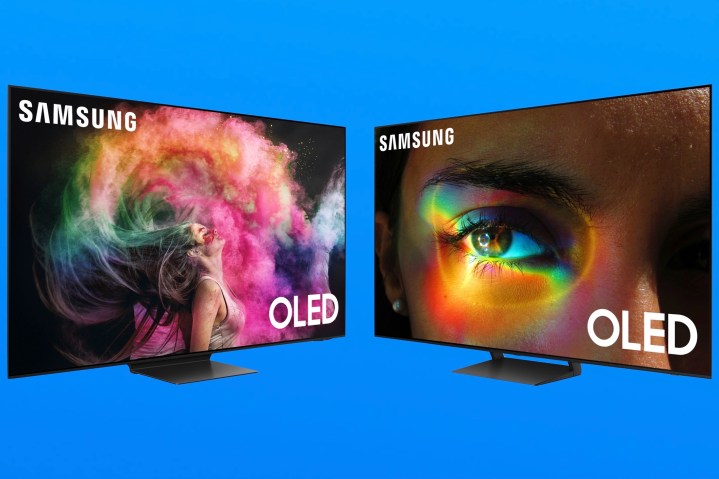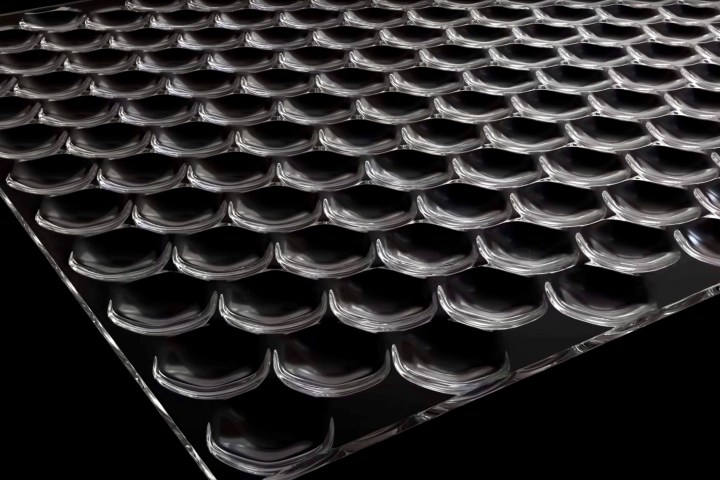

After years of dissing LG’s OLED TVs, Samsung is now 100% on team OLED. Now not handiest did the firm invent its have OLED technology known as QD-OLED, it additionally struck a take care of LG Show to aquire the identical WOLED panels that Sony and LG employ to manufacture just a few of their OLED TVs. That’s an extraordinary turnaround.
Nevertheless as beautiful as it is to explore the arena’s most attention-grabbing TV manufacturer at last acknowledge the advantages of OLED TV tech, we’re additionally seriously at a loss for phrases by Samsung’s confusing capacity to selling its OLED TVs.
Earlier than we fetch into the particulars, let’s grab a stare at like a flash stare at the speak of OLED TV display technology. Ought to you’re already acquainted with the variations between WOLED, QD-OLED, and MLA, in actuality be at liberty to skip all of the map down to The Samsung S90C predicament.
WOLED, QD-OLED, and MLA

The OLED world is a minute more nuanced at the moment time than it used to be five years in the past, and not all OLED TVs are created equal.
WOLED, or white OLED, is the OG of OLED TV tech. Until currently, all OLED TVs were WOLED TVs. LG Show has been at the forefront of this OLED panel kind for years and stays one in every of the handiest companies that create them. WOLED uses two forms of OLED discipline cloth to invent white gentle, which is then separated into red, inexperienced, and blue subpixels with a colour filter. A fourth white subpixel is used to red meat up brightness — here is the put the W in WOLED comes from.
Then came QD-OLED — quantum dot OLED — which used to be first commercialized by Samsung Show. A QD-OLED panel uses correct blue OLED discipline cloth for every pixel after which converts a third of that pixel into red and a third into inexperienced the employ of two forms of quantum dots, ensuing in a correct RGB pixel that wants no further colour filtering.
QD-OLED’s voice to status is that it presents more correct colors at better brightness ranges on account of it doesn’t depend on WOLED’s white subpixel, nor does it employ brightness-sapping colour filters.
Does that voice pass the smell take a look at? Fully. When Digital Trends Editor At-Gigantic Caleb Denison received his fingers (and eyes) on the first QD-OLED TVs from Samsung (S95B) and Sony (A95K), he used to be unequivocal in his praise.
Now to not be outdone, LG Show learned a scheme to further red meat up its WOLED efficiency by alongside side a Micro Lens Array (MLA) layer to its panels. Billions of little, invisible lenses release further gentle from the panel that had been beforehand trapped ensuing from internal reflections. When blended with a dedicated image processing algorithm, MLA-based entirely WOLED TVs provide 22% more brightness than their non-MLA cousins.
MLA is so effective, that as soon as Denison went again into the lab to test Samsung’s QD-OLED S95C versus LG’s MLA WOLED G3, he merely couldn’t represent one to be superior to the bogus.
The Samsung S90C predicament

Assuredly thru TVs, if a firm makes a mannequin in a vary of display sizes, you are going to be ready to demand that the total dimensions are the handiest variations — not not up to thru image quality — from one dimension to one other. There are frequently other specs that replace, love the integrated stand (or the assortment of native dimming zones in the case of LED/mini-LED TVs), but that’s about it.
Now not so with Samsung’s S90C. In its three smallest display sizes: 55-, 65-, and 77-inches, the S90C uses a QD-OLED panel, but in its most attention-grabbing layout — the currently presented S90C 83-meander mannequin — it’s a WOLED panel.
Samsung doesn’t exactly stir out of its scheme to represent you this. The product page for the S90C is confusing in a assortment of how. Samsung uses it to promote every the S90C and its more potent tall brother, the S95C. All four display sizes are listed below the mannequin names, but whilst you pay finish attention, you’ll survey that clicking on the 83-meander risk constantly switches the mannequin determine to S90C, even if you started by taking a stare at the S95C.
Stare even closer and you’ll survey the one surefire giveaway that the 83-meander mannequin isn’t love the bogus sizes: there’s no mention of quantum dots any place in the outline. The three smallest sizes for every the S90C and S95C discuss over with “Samsung OLED Technology,” whereas the 83-meander S90C says correct “OLED Technology” — a subtle but telling distinction.
Splitting hairs?
Are you rolling your eyes yet? Am I being too pedantic? Didn’t I correct show that even Digital Trends’ predominant TV expert can’t in actuality decide if he prefers QD-OLED or MLA WOLED?
It’s correct, I did correct write that. Nevertheless therein lies the subject. The 83-meander S90C doesn’t correct employ a determined panel technology than the smaller variations — it additionally uses non-MLA WOLED, which is not equivalent to QD-OLED. In other phrases, the 83-meander S90C can’t voice to provide the identical image quality because the 55-, 65-, and 77-meander variations.
To be pleasing, LG isn’t entirely harmless. Its G3 units sized 83 inches and above don’t employ MLA either. Nevertheless not not up to they’re in the identical family of OLED tech by the employ of LG’s have WOLED panels.
Staunch employ one other mannequin determine already

So what’s the resolution? Smartly as nutty as this sounds, I decide up Samsung must soundless correct invent a recent mannequin designation for its WOLED-based entirely TVs. Sony, the handiest other firm everybody knows of that sells every QD-OLED and WOLED TVs, already does this. Its A95-assortment Bravia TVs are strictly QD-OLED based entirely, and available in the identical 55-, 65-, and 77-meander sizes as Samsung’s S95C. For its WOLED units, it uses the A80- and A90-assortment Bravia designations, and these units reach in 55-, 65-, 77-, and 83-meander sizes.
WOLED here, WOLED there
As if all of this weren’t confusing sufficient already, it sounds as if Samsung is planning a recent OLED mannequin designation. In step with FlatpanelsHD, the firm has started trying for 77-meander WOLED panels from LG Show and is going to make employ of them in an upcoming vary that will perhaps be known as the S89C or perhaps the S85C.
If that represent is correct, Samsung appears to be like to explore the earnings of segregating its WOLED TVs from its QD-OLED units. And yet — except it changes its technique midstream — the S90C will remain a hybrid of the 2 applied sciences reckoning on the dimension you aquire.
Editors’ Ideas
-
Samsung’s most attention-grabbing Neo QLED 8K TV comes with an equally huge sign
-
Sony’s 2023 A95L QD-OLED TV up for preorder in August initiating at $2,800
-
Samsung takes on TCL with 98-meander 4K TV that charges correct $8,000
-
Conan O’Brien will get a 24/7 existing on Samsung TV Plus
-
Sony releases its 2023 TV prices with one very tall exception